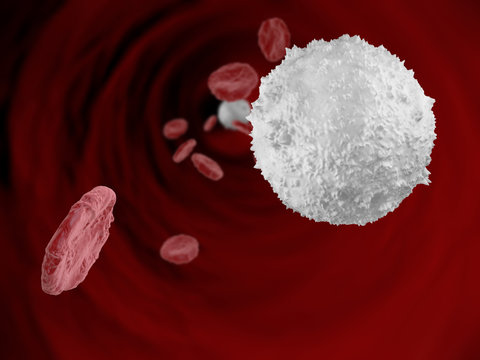White blood cells (WBCs), also called leukocytes, are a key component of the blood and the body's immune system. They are responsible for identifying and destroying foreign invaders, such as bacteria, viruses, fungi, and parasites, as well as clearing away dead cells and debris. Unlike red blood cells and platelets, which are confined to the bloodstream, leukocytes can move out of blood vessels into tissues to reach sites of injury or infection, a process called diapedesis.
Etymology
The name leukocyte is derived from Greek roots: leukos meaning 'white' and kytos meaning 'cell'. They appear whitish when a blood sample is centrifuged because they lack hemoglobin, the pigment that gives red blood cells their color. White Blood Cell - Britannica
Types of White Blood Cells
Leukocytes are classified into two main groups based on the presence or absence of visible granules in their cytoplasm: granulocytes and agranulocytes.
Granulocytes
Granulocytes are characterized by the presence of specific granules in their cytoplasm and have a lobed nucleus. They are part of the innate immune system and are typically the first responders to infection or injury. All are produced in the bone marrow.
- –Neutrophils: The most abundant type of WBC, making up 50-70% of all leukocytes. Neutrophils are phagocytic cells that engulf and destroy pathogens, particularly bacteria. They are a primary component of pus.
White Blood Cells - MSD Manual
- –Eosinophils: Comprising 1-4% of leukocytes, eosinophils are involved in combating parasitic infections and play a role in allergic reactions like asthma and hay fever.
- –Basophils: The least common type, making up less than 1% of leukocytes. Basophils release histamine and other mediators of inflammation during allergic reactions and are functionally similar to mast cells.
White Blood Cell - Britannica
Agranulocytes
Agranulocytes lack visible cytoplasmic granules and have a non-lobed, spherical or kidney-shaped nucleus. They are primarily involved in the adaptive immune response.
- –Lymphocytes: The second most common type of WBC (20-40%), lymphocytes are crucial for adaptive immunity. They are further divided into:
- –B cells: Produce antibodies that bind to and neutralize specific pathogens.
- –T cells: Directly kill infected host cells (cytotoxic T cells) or help coordinate the immune response (helper T cells).
- –[Natural killer (NK) cells]: Part of the innate immune system, they can kill tumor cells and virus-infected cells without prior sensitization.
- –Monocytes: The largest type of WBC (2-8%). Monocytes circulate in the blood for a few days before migrating into tissues, where they differentiate into macrophages or dendritic cells. Macrophages are powerful phagocytes that engulf pathogens and cellular debris, while dendritic cells act as antigen-presenting cells to activate T cells.
NCI Dictionary of Cancer Terms: Leukocyte
Production and Lifespan
All white blood cells originate in the bone marrow from a common hematopoietic stem cell. The process of their formation and development is called leukopoiesis. Leukopoiesis - StatPearls - NCBI Bookshelf This process is regulated by various signaling molecules, including cytokines like colony-stimulating factors (CSFs) and interleukins.
The lifespan of white blood cells varies greatly. Granulocytes, such as neutrophils, may only live for a few hours to a few days. In contrast, some lymphocytes (memory cells) can persist for years, providing long-term immunity.
Disorders of White Blood Cells
Abnormalities in the number or function of white blood cells can lead to serious medical conditions.
- –Leukopenia: A condition characterized by an abnormally low number of white blood cells. This increases the risk of infection, as the body's defenses are weakened. Causes can include viral infections, certain autoimmune disorders, chemotherapy, and bone marrow diseases.
- –Leukocytosis: An abnormally high number of white blood cells. It is often a normal response to infection or inflammation but can also be a sign of underlying diseases, including certain cancers.
WBC count - MedlinePlus
- –Leukemia: A group of cancers that usually begin in the bone marrow, resulting in the production of a high number of abnormal white blood cells. These cancerous cells are not fully developed and cannot function properly, and they crowd out normal blood cells.
- –Lymphoma: A cancer of the lymphatic system, which involves the uncontrolled growth of lymphocytes.
